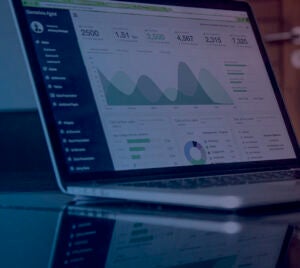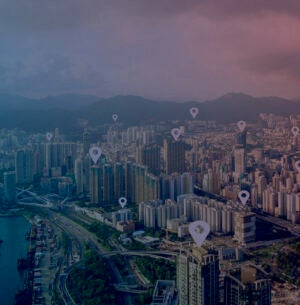1. Use AI for more strategic procurement
Even before the coronavirus outbreak, supply chain management was a tricky balancing act between cost and efficiency. Put simply, local supply chains tend to be more resilient and efficient, but come at a cost. Distant supply chains tend to be less expensive, but less robust. The trick is to combine the two to create financial efficiency and guaranteed supply.
Dr Robert Boute, professor of operations management at Belgium’s Vlerick Business School, says the use of procurement technology can ensure this balance is maintained, even in crisis situations. Sophisticated artificial intelligence (AI), for example, can instantly source the best mix of suppliers from those left standing.
“AI needs to be used more by companies to not only simulate potential shocks and scenarios that impact the supply chain, so we are better prepared for them, but also to try and find this perfect balance between efficiency and resilience,” he says.
Boute believes AI is an under-utilised resource in procurement. He adds: “One positive that may come from COVID-19 is that more companies see the need for AI in the supply chain, to ensure supply is as consistent as possible.”
2. Improve crisis management with data analysis
Procurement technology that automates the analysis of data at critical points in the source-to-pay, or S2P, process is important at any time, and vital during crisis management. This could be the role of your enterprise resource planning platform or of any third-party e-procurement module that integrates seamlessly with it.
And when you have an integrated system in which every component talks to every other, you unlock a world of benefits, says Sergii Dovgalenko, author of The Technology Procurement Handbook.
“As cornerstone business concepts and practices change under the influence of COVID-19, your e-procurement platform becomes a vehicle for a better operational model, which is resilient, omnipresent and collaborative,” he says. “As raw data flows across your systems, you should be able to extract it for new insights, such as risk management, supply base optimisation, supplier innovation and more.”
3. Put supply chain management in the cloud
Richard Hibbert, chief executive of integrated risk management solutions provider SureCloud, says businesses need to know their supply chains inside out and never more so than in crisis situations.
“Part of the problem is supply chains these days are exceptionally complex and dynamic, and it can be difficult to accurately map individual suppliers on to specific products, services or business functions,” he says.
Supply chain audits need to collect and collate masses of data from suppliers, from cybersecurity measures and continuity planning, to “softer” information about locations and how easily staff might switch to home working. And it’s not just about your third party, but also the fourth and fifth parties they are working with.
For these reasons, the COVID-19 crisis has made a very good case for investing in cloud-based supplier management. Third and fourth parties and beyond can respond to digital questionnaires, with the information collated and aggregated automatically. “The result is a snapshot view of the health or risk of the supply chain at any time,” says Hibbert.
4. Ease the pressure with automation
There are plenty of human touchpoints in the procurement process, from contract management to managing supplier relationships. These time-consuming, manual processes are probably not what you need right now.
So automate them. As procurement technology goes, robotic process automation (RPA) is not super-smart, but it is effective. RPA “robots” are pieces of software designed to automate tasks that are labour intensive and rule based, including many of the repetitive tasks humans do on a computer. RPA bots just do them more quickly, more accurately and around the clock.
In the procurement setting, RPA bots might scan lengthy contracts to identify gaps in compliance. They can monitor inventory levels and trigger purchase transactions. In fact, they can do much more and, by freeing up small procurement teams for more urgent tasks, they can take the pressure off when crisis management protocols kick in.
5. Make digital twinning part of your business continuity planning
COVID-19 has emphasised the need for supply chain transparency and for companies to prepare for disruption. Procurement tech can help businesses model scenarios, assess their impact and suggest pragmatic business continuity measures.
They can do such modelling most effectively using a digital twin. This is a digital representation of a supply chain, with the ability to simulate and analyse the effects of disruption. According to Emile Naus, partner at management and technology consulting firm BearingPoint, disruption can mean short-term issues, like extreme weather, or long-term challenges, such as economic downturns or a pandemic.
Long, complex supply chains with little visibility are inherently risky, but digital twinning can make them less so. “Procurement will need to assess that risk and a digital twin will enable the risks to be quantified and valued against the cost per unit benefits,” says Naus. “It will enable proactive responses to these events by creating a detailed set of action plans.”




